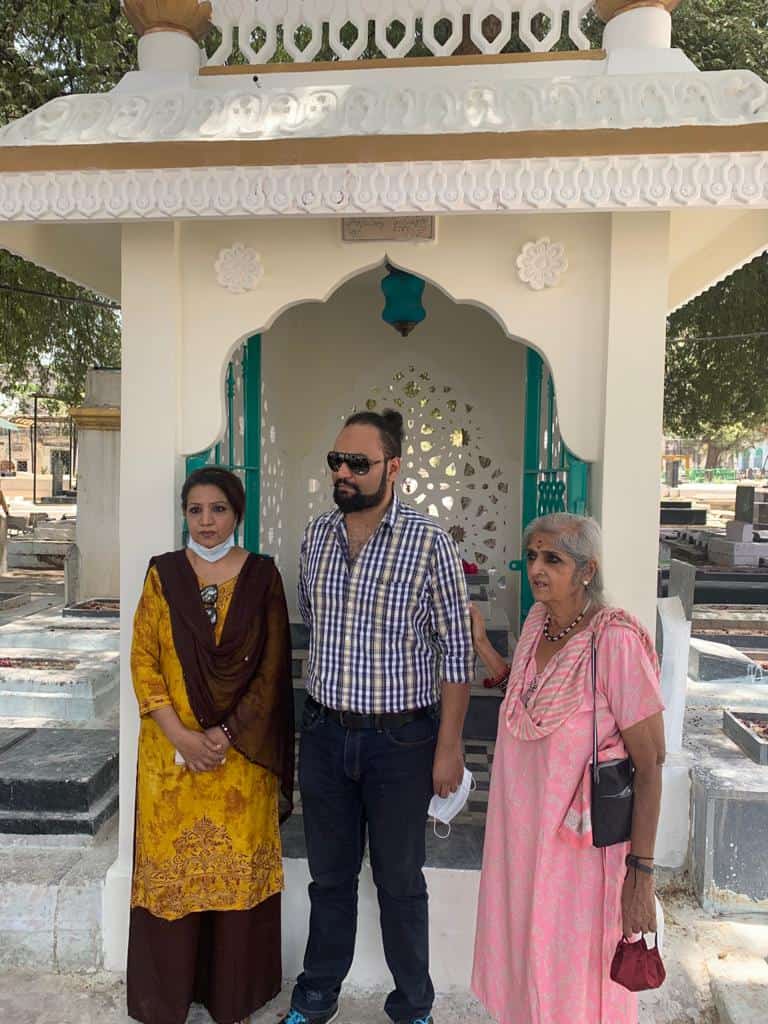Hyderabad: Controversy marked the 54th birth anniversary of renowned Indian vocalist and Padma Bhushan awardee Ustad Bade Ghulam Ali Khan here on Friday (April 2), when family members of the artist realised that the state government began restoration of his maqbara (tomb) without informing them.
While Khan’s family members were thankful that the state government showed interest in the restoration of the tomb, they were, however, were miffed with the fact that the original structure that was built with limestone mortar (called gachhi, locally) was tampered with. Samina Khan, granddaughter-in-law of Ustad Bade Ghulam Ali, said that the state government should have known about the works.
“The structure was of heritage value,” she told media persons on Friday after tributes were paid to the artist on his birth anniversary. Samina said that the structure must be preserved and restored to its original form and that the structure that stands now, post repairs by the state government, “appears different” from the original one.
The decision to restore the vocalist’s grave was announced by principal secretary, municipal administration and urban development, Arvind Kumar who shared photos of the restoration work on his Twitter account. “On the occasion of his death anniversary (April 25th), restoring the grave tomb of Padma Bhushan Ustad Bade Ghulam Ali Khan Saaheb, the greatest classical exponent of Patiala Gharana at the Dairah-e-Mir Momin, Sultan Shahi, Hari Bowli Road,” he wrote on Twitter some days ago.
On Friday, heritage lovers and family members of Ustad Bade Gulam Ali Khan paid tributes to the artist at the Daira Mir Momin in Hyderabad’s Old City, where he was laid to rest. The place where his tomb is located is in fact one of the city’s oldest landmarks dating back to the Qutb Shahi or Golconda period (1518-1687). The graveyard is named after Mir Momin Astrabadi, the founding prime minister and architect of Hyderabad.
Astrabadi worked alongside Hyderabad’s founder Mohammed Quli Qutb Shah (1580-1611), the fourth monarch of the Golconda dynasty, who built the new city in 1591 after deciding to leave the Golconda fort. Astrabadi was buried at the Daira Mir Momin, where the Sufi saint Shah Chirag’s tomb had already existed, making the area older than Hyderabad itself.







